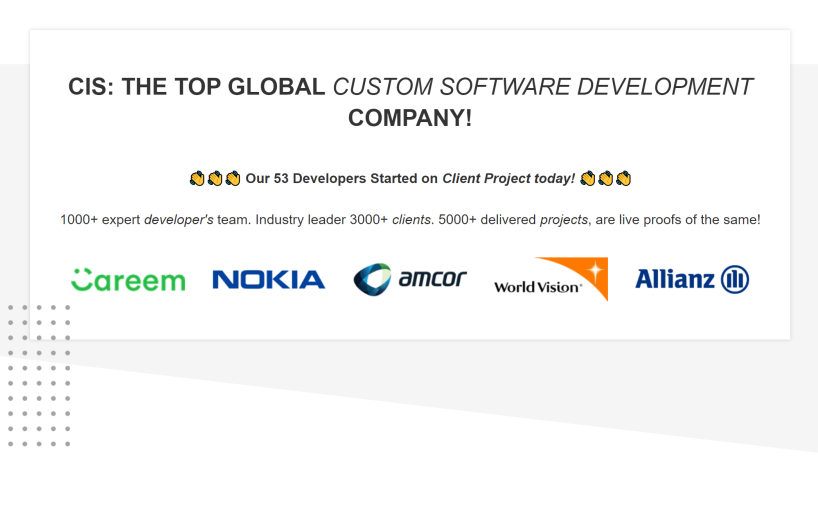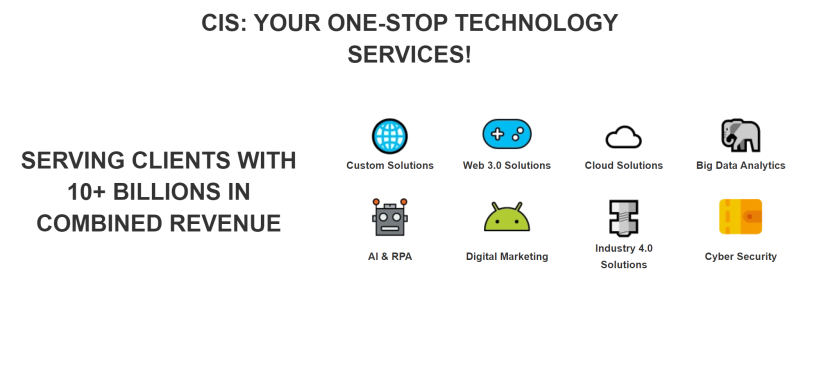Maximizing ROI: The Cost and Benefits of Adopting Sap For Insurance for Your Business
- SAP for Insurance - Detailed Analysis by Enterprise Solutions Experts



Why Mid-size Companies and Enterprises needs SAP For Insurance:
SAP for Insurance provides mid-size companies and enterprises with a comprehensive suite of solutions designed to help them manage their insurance operations more efficiently and effectively. It enables them to automate processes, reduce costs, improve customer service, and increase operational efficiency. By leveraging the power of SAP's enterprise resource planning (ERP) platform, organizations can better manage policy administration, claims processing, underwriting management, reinsurance management and other core business functions. Additionally, SAP for Insurance offers a variety of analytics capabilities that allow businesses to gain insights into their data in order to make smarter decisions about how they operate. As such it is an essential tool for any mid-size company or enterprise looking to maximize its performance in the highly competitive insurance market.
Benefits of using SAP For Insurance in Mid-size companies and Enterprises:
1. Improved Efficiency:
SAP for Insurance can help mid-size companies and enterprises streamline their operations, reduce manual processes, and automate mundane tasks such as policy administration and claims processing. This helps improve operational efficiency while reducing costs.
2. Increased Productivity:
By automating back-office processes with SAP for Insurance, mid-size companies and enterprises can increase the productivity of their staff by freeing them from tedious administrative tasks to focus on more strategic initiatives that will grow the business.
3. Comprehensive Reporting:
SAP for Insurance provides comprehensive reporting capabilities so that businesses can quickly analyze data to make informed decisions about their products, services, customers, and markets in real time.
4. Enhanced Customer Experience:
With its customer self-service portal feature, mid-size companies and enterprises can provide a better customer experience by giving customers access to detailed information about their policies online without having to contact an agent or representative directly over the phone or via email/chat support which saves both time and money in the long runDetailed Features of SAP For Insurance for Mid-size companies and Enterprises:
1. Automated and Streamlined Workflows:
SAP for Insurance provides automated, streamlined workflows that enable mid-size companies and enterprises to quickly process customer requests, claims, payments, and more. This helps reduce manual processing time while ensuring accuracy.
2. Comprehensive Insights:
With the help of SAP's powerful analytics capabilities, businesses can gain insights into their customers' needs and preferences as well as identify trends in the insurance industry that can be used to inform decisions around product offerings or pricing strategies.
3. Improved Risk Management:
SAP for Insurance enables organizations to manage risk through predictive analytics tools that help identify potential areas of exposure before they become a problem. Additionally, it allows insurers to model different scenarios in order to better assess how changes will impact their business operations over time.
4. Enhanced Customer Experience:
By providing personalized services tailored specifically for each customer's needs, mid-size companies and enterprises can create an improved customer experience with SAP for Insurance solutions such as policy management systems and digital engagement platforms like chatbots or mobile apps which allow customers easy access to information about their policies anytime from anywhere .
5. Increased Efficiency & Productivity:
With its integrated suite of applications designed specifically for the insurance industry including CRM (Customer Relationship Management) , ERP (Enterprise Resource Planning), BI (Business Intelligence) , etc., businesses are able to automate processes across departments resulting in increased efficiency & productivity levels throughout the organizationWho are the Users of SAP For Insurance:
SAP for Insurance is used by a variety of customers, including insurance companies, brokers and agents, reinsurers, and financial services organizations. Customers include Allianz Global Corporate & Specialty (AGCS), Munich Reinsurance Company, AXA XL Insurance Solutions Group, Zurich Insurance Group AG, Generali Group IT Services S.p.A., Aviva plc UK Life Branch, MetLife Inc., and many more.
How to ensure Data Security and Compliance with SAP For Insurance:
1. Implement role-based access control:
Role-based access control is a security measure that allows administrators to assign different levels of access and privileges to users based on their roles within the organization. This helps ensure that only authorized personnel have access to sensitive data and applications, minimizing the risk of unauthorized data breaches or misuse.
2. Use encryption for data transmission:
Encryption is an important security measure used to protect confidential information transmitted over networks such as the internet. When using SAP for Insurance, it's important to encrypt all communication between systems, including customer records and financial transactions, in order to maintain data privacy and integrity.
3. Monitor user activity:
Monitoring user activity can help identify potential threats or suspicious behavior before they become a problem by tracking who has accessed what data when, where they are accessing from, etc., giving administrators more visibility into system usage patterns and helping them detect any unusual activities quickly.
4. Adopt best practices for securing cloud environments:
Cloud computing offers many benefits but also comes with certain risks which must be addressed in order to ensure compliance with regulations such as GDPR (General Data Protection Regulation). It's important to adopt best practices for securing cloud environments such as implementing multi-factor authentication (MFA), limiting privileged accounts, setting up secure network configurations, etc., in order keep your customers' data safe and compliant with relevant laws/regulations at all timesHow SAP For Insurance can increase organization Productivity, Agility, and Profitability:
SAP for Insurance can increase organization productivity, agility, and profitability by providing a comprehensive suite of integrated applications that enable insurers to manage their core processes more effectively. These applications provide insurers with the ability to automate complex business processes across multiple lines of business, reduce costs associated with manual data entry and processing, improve customer service levels through better access to information, streamline back-office operations such as claims management and policy administration, and gain insights into customer behavior. Additionally, SAP for Insurance provides advanced analytics capabilities which allow organizations to identify trends in their customers' behaviors in order to develop more effective marketing campaigns. This helps them maximize profits while ensuring compliance with industry regulations.
How to Measure KPIs and increase Benefits of implementing SAP For Insurance in Mid-size companies and Enterprises:
1. Establish measurable KPIs:
The first step in measuring the benefits of implementing SAP for Insurance is to establish measurable key performance indicators (KPIs). These could include cost savings, improved customer service, increased productivity, and better business insights.
2. Track progress:
Once you have established your KPIs, it's important to track progress regularly. This can be done through regular reports or dashboards that allow you to monitor how well the system is performing against each KPI over time.
3. Optimize processes:
As you track progress with SAP for Insurance implementation, look for areas where processes can be optimized or automated further using the system's features and capabilities. This will help maximize the benefits of using the software and ensure that your company gets as much value out of it as possible.
4. Monitor user adoption:
User adoption is a key factor in determining whether an IT project succeeds or fails - so make sure that you are monitoring user engagement levels closely throughout implementation and beyond. If users aren't actively engaging with the system on a regular basis then there may be issues which need addressing quickly before they become more serious problems down the line.
5 . Invest in training & support:
Finally, investing in training and ongoing support services will help ensure that users get up-to-speed quickly with SAP for insurance - while also providing them with additional resources if they ever encounter any issues along their journey towards becoming proficient users of this powerful toolsetHow SAP For Insurance can increase Employee Morale in your organization:
SAP for Insurance can help increase employee morale by providing employees with more efficient tools and processes to do their job. For example, SAP for Insurance can provide automated workflows that remove manual steps and reduce the amount of time spent on tasks. This automation helps free up time for employees to focus on other areas such as customer service or marketing initiatives which can lead to a greater sense of accomplishment and satisfaction in their roles. Additionally, SAP for Insurance provides access to real-time data which enables better decision making capabilities, giving employees the ability to make informed decisions quickly leading to improved outcomes. By improving overall efficiency and productivity, organizations will be able to recognize successes more often resulting in higher morale among staff members.
How SAP For Insurance is Better than its Competitors:
SAP for Insurance provides a comprehensive suite of solutions that are designed to help insurers and reinsurers manage their operations more efficiently. It offers an integrated platform with powerful analytics, reporting, and compliance capabilities. SAP for Insurance also has the ability to integrate with other systems, making it easier to share data across multiple departments in an organization. Additionally, its user-friendly interface makes it easy for users to access all the features they need without getting overwhelmed by complex menus or navigation options. This makes it much easier than its competitors when it comes to navigating through different areas of insurance management.
Cost to Develop & Implemention of SAP For Insurance:
The cost of developing and deploying SAP for Insurance will depend on the specific requirements of the project. Factors such as the size and complexity of the system, customization required, hardware and software costs, implementation fees, third-party integration services, maintenance costs, etc. will all play a role in determining the total cost. Generally speaking however estimates range from $500K to several million dollars depending on these factors.
Why outsourcing implementation services for SAP For Insurance is better for Mid-size companies and Enterprises:
Outsourcing implementation services for SAP for Insurance is beneficial for mid-size companies and enterprises as it can help reduce costs, increase efficiency, and improve customer service. Outsourcing these services allows businesses to focus on their core competencies while leaving the implementation of the software in the hands of experienced professionals who are familiar with its features and capabilities. Additionally, outsourcing provides access to specialized skillsets that may not be available internally, allowing businesses to take advantage of new technologies without having to invest in training or hiring additional staff. Furthermore, outsourced teams can provide ongoing support throughout the entire process so that any issues can be quickly addressed and resolved.


